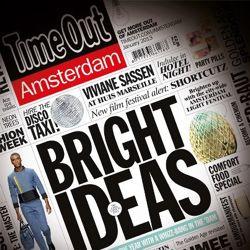January 2013

In his book Sex and Drugs before Rock 'n' Roll. Youth Culture and Masculinity during Holland’s Golden Age Roberts sheds light on one generation of young men who grew up in the affluent 1620s and 1630s – Rembrandt’s generation - and their fascination with fancy clothing, binge drinking, lust for stone-throwing, preoccupation with sex, and ‘drug issues’.
Roberts calls the 1620s and 1630s ‘the golden decades’ of the Golden Age. In those two decades, Holland was economically and culturally at the top of its game. Sociologists have discovered that affluence has an important impact on young people when the come of age. For example, young men who were born in the 1920s and came of age in 1930s and early 1940s, grew up during the economic depression and war. Throughout their lives, people from that generation tend to see more obstacles than opportunities. Whereas people born in the late 1940s and early 1950s that came of age during the economic boom of the 1960s, have a more optimistic outlook on life. Moreover, youths that grow up during periods of economic affluence express themselves more abundantly. According to Roberts, the parallels with the generation of the 1620s and 1630s, and the postwar youth culture of the 1960s is uncanny.
Contrary to their parents who grew up in sober times, male youths of the 1620s expressed themselves quite differently. They started letting their hair long, began wearing flamboyant, bright-colored, dandy-like clothes made from expensive silks, accessorized with ribbons, and wore shoes with a high-heel. Facial powder was even used to conceal any marks incurred during childhood from smallpox. The metrosexuals today were nothing in comparison to the wealthy youths of the 1620s and 1630s. Besides appearance Roberts also revealed that this generation of young people were not much different from young men today in their interest in sex. The primary difference is that parents in the Golden Age were more concerned about their teenage sons coming home with syphilis, the most dreaded STD of the era. Syphilis was the disease that affected young people the hardest and is comparable to the AIDS epidemic of the 1980s.
Roberts argues that youths have a fascination with novelty. One of the novelties of the 1620s and 1630s was smoking tobacco. Tobacco was the new drug. Never before in European history did people smoke (and inhale) tobacco with a pipe. In the 1620s students at the University of Leiden experimented with the medicinal properties of the tobacco plant as a possible remedy for the plague. While the tobacco had little effect against the plague, they did discover the narcotic ‘high’ from smoking tobacco. The tobacco then was much stronger version of tobacco used in filter cigarettes today, and is probably similar to ‘zware shag’. Thirty years later, smoking tobacco had become a Dutch national pastime. They made smoking a habit that took society almost 400 hundreds to kick.
Sex and Drugs Before Rock ‘n’ Roll. Youth Culture and Masculinity during Holland’s Golden Age is also included in the exhibition ‘The Dutch Golden Age- The Gateway to Our Modern World’ in the Amsterdam Museum, till Aug. 31, 2013; and will be featured in the Dutch television series ‘De Gouden Eeuw’ (The Golden Age) on Jan. 22, 2013 on Nederland 2, 20.25.